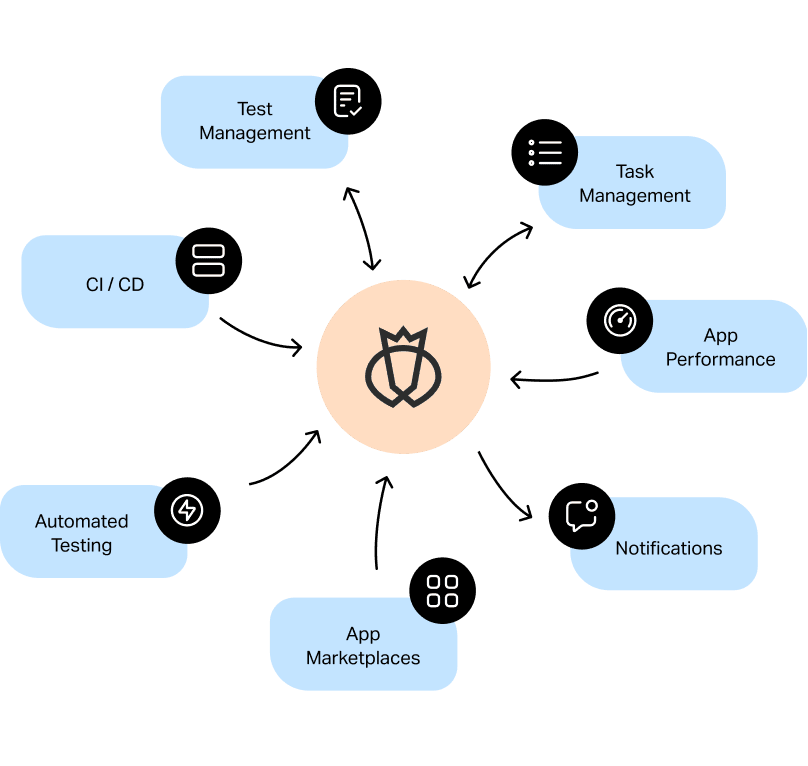Making Certain Success in Automation Testing: Secret Metrics, Obstacles, and Solutions Every QA Group Should Know
In the realm of software quality control, the landscape of automation screening is ever-evolving, requiring a thorough approach to make certain smooth operations. Secret metrics function as the compass guiding QA groups through the large surface of test automation, clarifying progression and areas for improvement. Nevertheless, obstacles loom huge, frequently casting shadows on the course to success. By understanding these difficulties and carrying out efficient options, QA teams can browse via complexities with skill. The trip to mastering automation testing is paved with nuances that call for an eager eye for surveillance, evaluation, and continual renovation. automation testing. As the market pushes forward, the mission for optimal efficiency in automation testing continues to be a continuous quest, urging QA teams to equip themselves with the expertise and methods important for triumph.
Relevance of Secret Metrics
Comprehending the importance of key metrics is necessary for evaluating the performance and performance of automation screening processes. Secret metrics work as measurable actions that supply useful insights right into different facets of the testing procedure, such as test insurance coverage, examination execution time, issue density, and test instance efficiency. By assessing these metrics, QA groups can determine bottlenecks, inadequacies, and areas for improvement within their automation testing framework.
One important aspect of key metrics is their ability to track progression and monitor the overall wellness of the screening procedure (automation testing). They enable stakeholders to make enlightened choices based on data-driven insights, which can bring about more reliable screening strategies and much better source allotment. In addition, vital metrics can assist groups set sensible objectives, measure the success of automation initiatives, and demonstrate the ROI of automation screening efforts

Common Challenges Dealt With
Obstacles generally run into in automation testing processes can considerably impact the total effectiveness and effectiveness of QA groups. Among the major obstacles is the selection of the appropriate test situations for automation. Not all examination cases appropriate for automation, and selecting the wrong ones can result in lost time and sources. Furthermore, preserving test scripts can be a challenging job, specifically as the application goes through frequent adjustments. Examination script upkeep needs continuous updates and adjustments to guarantee they show the existing capability properly. Another common challenge is the first financial investment required for establishing automation structures and devices. This can be an obstacle for some companies, especially smaller sized ones with restricted spending plans. Automation screening might not cover all facets of testing, such as use and customer experience testing, which still need hand-operated treatment. Overcoming these difficulties needs correct planning, strategic test situation choice, durable maintenance procedures, appropriate sources, and a clear understanding of the restrictions reference of automation screening.
Effective Solutions for Challenges
To attend to the challenges experienced in automation testing, carrying out efficient remedies is vital for enhancing the efficiency and productivity of QA teams. One essential option is to purchase robust training programs for QA groups to guarantee they have the needed abilities to effectively utilize automation tools. Training can connect understanding spaces, improve understanding of automation structures, and boost scripting capacities, ultimately resulting in extra effective test production and execution.
One more important remedy is to develop clear communication channels within the QA group and with various other stakeholders, such as programmers and task managers. Reliable interaction helps in lining up assumptions, sharing development updates, and promptly attending to issues wikipedia reference or roadblocks that may occur throughout the automation testing procedure.

Surveillance and Evaluation Techniques
Implementing reliable surveillance and analysis techniques is critical for making certain the success and performance of automation screening processes. By using surveillance tools, QA teams can track the performance of examination manuscripts, recognize traffic jams, and pinpoint areas for enhancement. Real-time monitoring enables quick discovery of issues, allowing rapid action and resolution. Furthermore, examining examination outcomes and metrics gives useful understandings into the top quality of the software program being tested and the effectiveness of the screening strategy.
One secret strategy in monitoring and analysis is making use of dashboards that settle pertinent metrics and KPIs in a visually available style. These dashboards offer a thorough summary of test implementation standing, examination coverage, flaw trends, and other essential info. Routinely evaluating and examining these dashboards can assist QA teams make notified decisions, prioritize tasks, and enhance screening initiatives.
In addition, applying automated signals and notices based on predefined limits can improve aggressive surveillance and prompt intervention. By setting up informs for performance variances or examination failings, groups can attend to concerns immediately and avoid them from rising. On the whole, monitoring and analysis techniques play an important function in ensuring the efficiency and success of automation testing efforts.
Constant Enhancement Techniques
Enhancing the effectiveness of automation screening processes requires the consistent improvement of approaches and methods. One crucial recommended you read strategy to improving automation testing procedures is to carry out normal evaluations and retrospectives.

Verdict
Finally, it is crucial for QA teams to recognize the vital metrics, challenges, and services in automation screening to make certain success. By carefully keeping an eye on and evaluating data, implementing effective options to usual difficulties, and continuously enhancing approaches, QA groups can enhance their testing procedures and deliver top quality software. Sticking to these methods will ultimately cause a lot more efficient and effective automation testing techniques.
By analyzing these metrics, QA groups can recognize bottlenecks, inadequacies, and areas for improvement within their automation testing framework.
In addition, essential metrics can assist teams established sensible objectives, gauge the success of automation campaigns, and show the ROI of automation screening initiatives.
Obstacles generally run into in automation screening processes can significantly affect the general performance and efficiency of QA groups. Automation screening may not cover all facets of testing, such as usability and customer experience screening, which still require hands-on intervention.In verdict, it is crucial for QA groups to recognize the key metrics, difficulties, and remedies in automation screening to make certain success.
Comments on “How Automation Testing Revolutionizes Quality Assurance Processes”